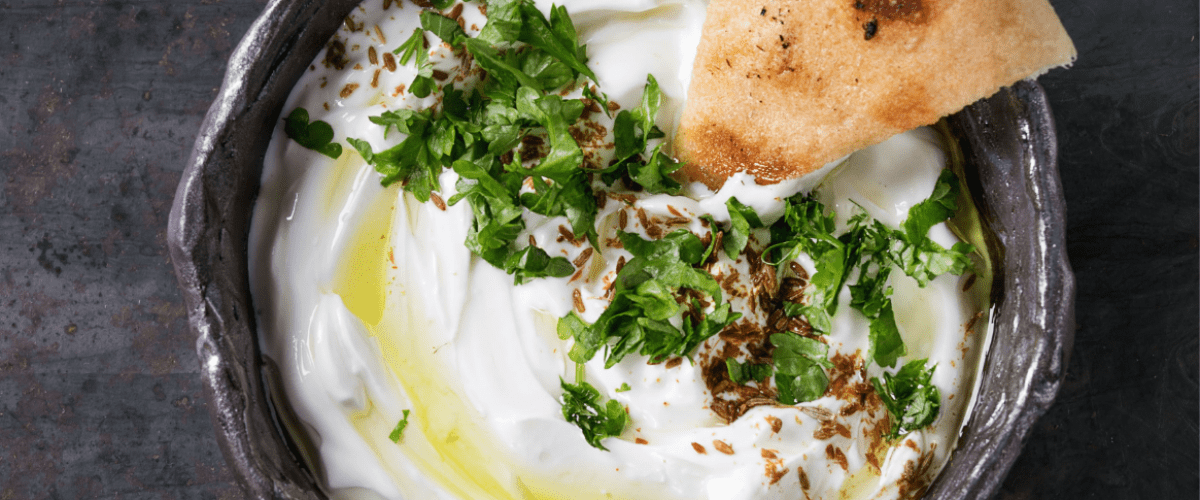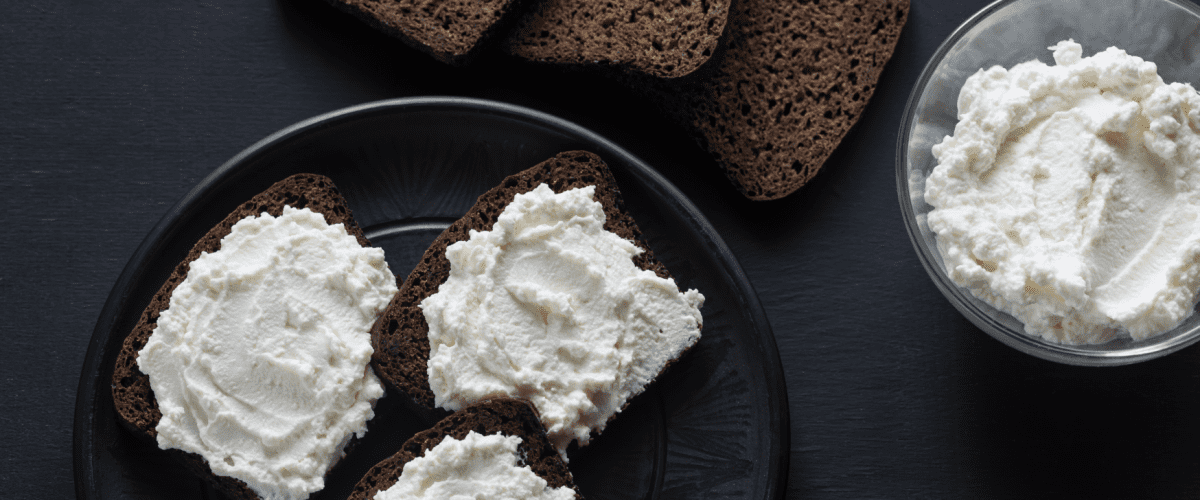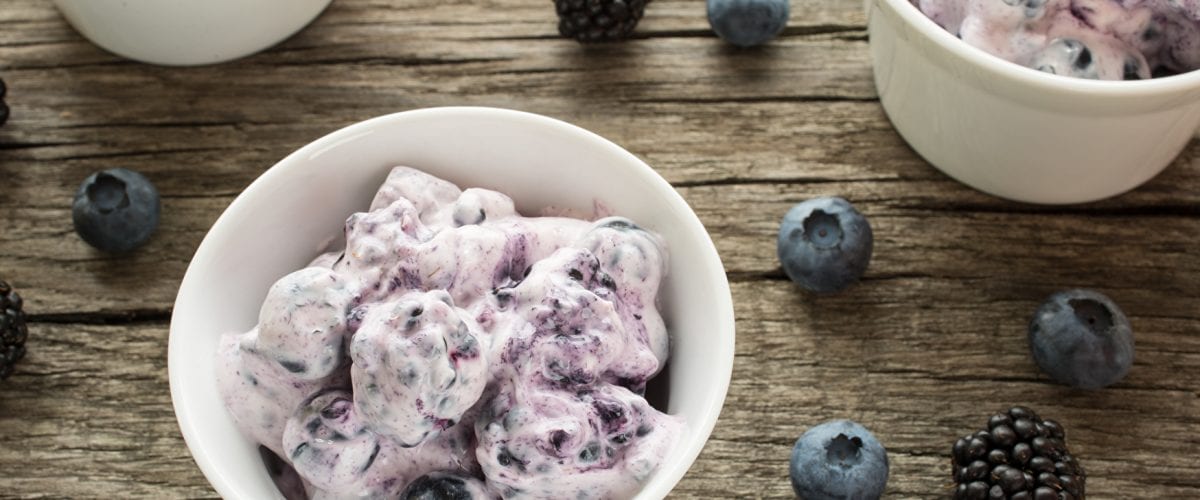Quark or cream cheese, what exactly is it? Here you can find out interesting facts about quark and its classification as cheese.
The big question at the breakfast table: What goes better with muesli – quark or yoghurt? Is quark also suitable as a spread under jam or should it be cream cheese? Just a moment: Somehow it is all the same, so what exactly is quark? We hope the following facts about the classification of quark, its production and its health value interest you.
Quark, also known as curd, is a cream cheese. The term generally refers to a rindless cheese product that does not require maturing before consumption and has a high water content. The basic ingredient of the product is milk. Differences arise due to the type of milk, different fat content levels and variations in the manufacturing processes. Apart from quark there are therefore numerous other types of cream cheese.

Quark and other types of cream cheese: a wide variety
There are many different types of quark, depending on the fat content of the milk. Either whole milk, semi-skimmed or skimmed milk can be used in the production process. The milk or the quark produced can also be enriched with cream. The low-fat quark we all know has the lowest fat content and is made from skimmed milk. Its consistency tends to be somewhat dry, because the higher the fat content, the creamier the consistency.
What we often simply call “cream cheese” is in fact two types of cream cheese: “cream cheese” and “double cream cheese”. They are similar to quark in their pasty consistency, but differ in terms of their water and fat content. The water content of quark is much higher. The fat content in the dry mass of quark varieties is significantly lower than that of cream or double cream cheese. Quark is therefore a low-calorie alternative to the two familiar sandwich spreads. However, this comes at the expense of creaminess.
Many other types of cheese, which many people do not initially associate with cream cheese, are also included in the cream cheese family. Examples of this are buffalo mozzarella, feta, ricotta, mascarpone or halloumi. The range is very wide. The consistency ranges from soft and creamy to firm when cut. The taste of cream cheese is mainly determined by the milk used in production. In Germany and Austria, quark is the best-known cow’s milk cream cheese.
From milk to quark: Production of low-fat quark
Low-fat quark starts off with pasteurized skimmed milk. Lactic acid and a little rennet are added to this, causing the milk protein to coagulate and separate. This is also referred to as “curdling” the milk. The mass is then stirred and then centrifuged to separate the whey from the curd. A straining machine gives the mass an even consistency. Afterwards, the quark mass must be well cooled before it is filled and packaged.
The water content of all types of fresh cheese is still very high after the production process, which is why the shelf life is limited. Make sure you always store your cream cheese products in a cool place and use up opened products within a few days. Quark stays fresh for up to three days in the refrigerator. However, you can store quark for up to ten days in Liebherr’s BioFresh safe. Products that are pickled in oil or brine, such as feta cheese, can be stored for longer periods.

Strength and health: The many sides of quark
Besides water, the protein content of quark is also very high. Our body can also make good use of the protein, as it contains many essential building blocks that we need for building muscles and other proteins. This is why quark is very popular with athletes. In addition, low-fat quark is particularly suitable for a calorie-conscious diet.
But that’s not all: the white cream also contains valuable vitamins and minerals such as vitamin B1, B2 and vitamin A as well as calcium and phosphorus. This means that quark makes an important contribution to your nutrient supply, health and strength. Since yoghurt and quark are suitable for use in similar food types, the question of which of the two dairy products is healthier is often raised. Which is better on morning muesli or in fruit salad?
Roughly speaking, both have their advantages. Variety is always good, and in the end it all comes down to personal preference. It’s worth noting that quark has a higher protein content. This also has an effect on your stomach – quark makes you feel full longer. In contrast, yoghurt is the clear winner when it comes to calcium. Its content is around 120 mg per 100 g yoghurt, while quark contains around 85 mg per 100 g.
Tip: Why can’t you just mix quark with yoghurt? So you don’t have to decide for one or the other and you get a great consistency.

Quark, quark, quark – and much else besides
Quark also enriches the many types of food due to its versatility. Whether you enjoy it with fresh fruit or as a well-seasoned dip – you can create many tasty and healthy meals with it. If you are in the mood for something sweet, you can also try quark as a cake filling. In warm dishes, however, especially low-fat quark varieties can easily start to flocculate. If you don’t mind this, you can experiment with it here too.
Even though quark is very popular, sometimes the question of alternatives arises. For example, in the case of dairy-free or low-dairy diets. This is where quark alternatives made from vegetable protein come in. Examples are products made from lupins or tofu, also known as soy quark. There are also soy-based quark alternatives that are more similar to the consistency of classic cow’s milk quark. Even almond-based quark-like products can be found.
If you are happy consuming milk but occasionally crave something unusual, you can try the so-called “new” quark: Skyr. Skyr is a traditional milk product from Iceland. This product is most easily compared to low-fat quark, as it is very low in fat and calories. The protein content is somewhat lower than in quark, but Skyr has a higher calcium content. The many different types guarantee variety in the kitchen.